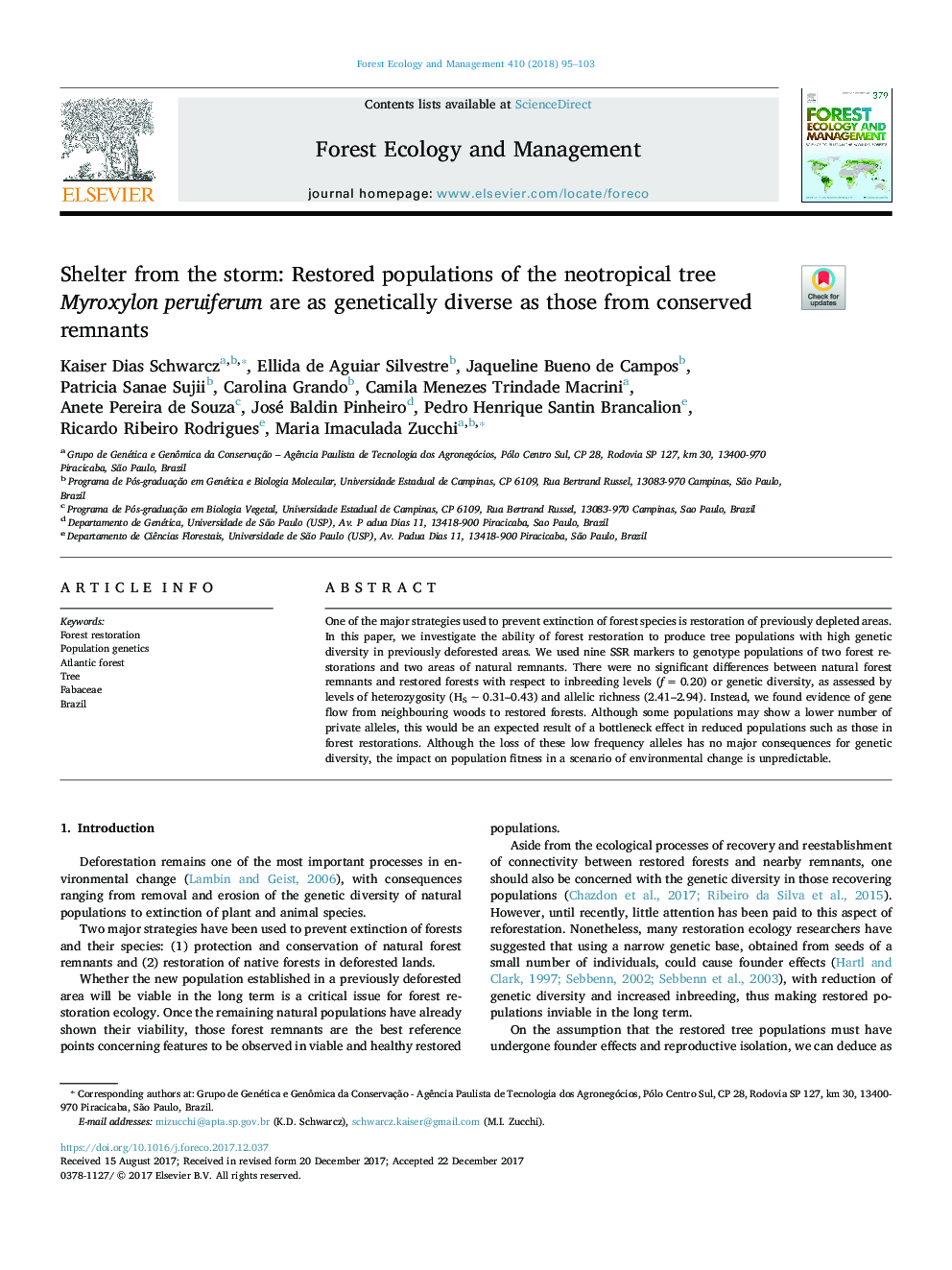| Article ID | Journal | Published Year | Pages | File Type |
|---|---|---|---|---|
| 6541855 | Forest Ecology and Management | 2018 | 9 Pages |
Abstract
One of the major strategies used to prevent extinction of forest species is restoration of previously depleted areas. In this paper, we investigate the ability of forest restoration to produce tree populations with high genetic diversity in previously deforested areas. We used nine SSR markers to genotype populations of two forest restorations and two areas of natural remnants. There were no significant differences between natural forest remnants and restored forests with respect to inbreeding levels (fâ¯=â¯0.20) or genetic diversity, as assessed by levels of heterozygosity (HSâ¯â¼â¯0.31-0.43) and allelic richness (2.41-2.94). Instead, we found evidence of gene flow from neighbouring woods to restored forests. Although some populations may show a lower number of private alleles, this would be an expected result of a bottleneck effect in reduced populations such as those in forest restorations. Although the loss of these low frequency alleles has no major consequences for genetic diversity, the impact on population fitness in a scenario of environmental change is unpredictable.
Related Topics
Life Sciences
Agricultural and Biological Sciences
Ecology, Evolution, Behavior and Systematics
Authors
Kaiser Dias Schwarcz, Ellida de Aguiar Silvestre, Jaqueline Bueno de Campos, Patricia Sanae Sujii, Carolina Grando, Camila Menezes Trindade Macrini, Anete Pereira de Souza, José Baldin Pinheiro, Pedro Henrique Santin Brancalion,
